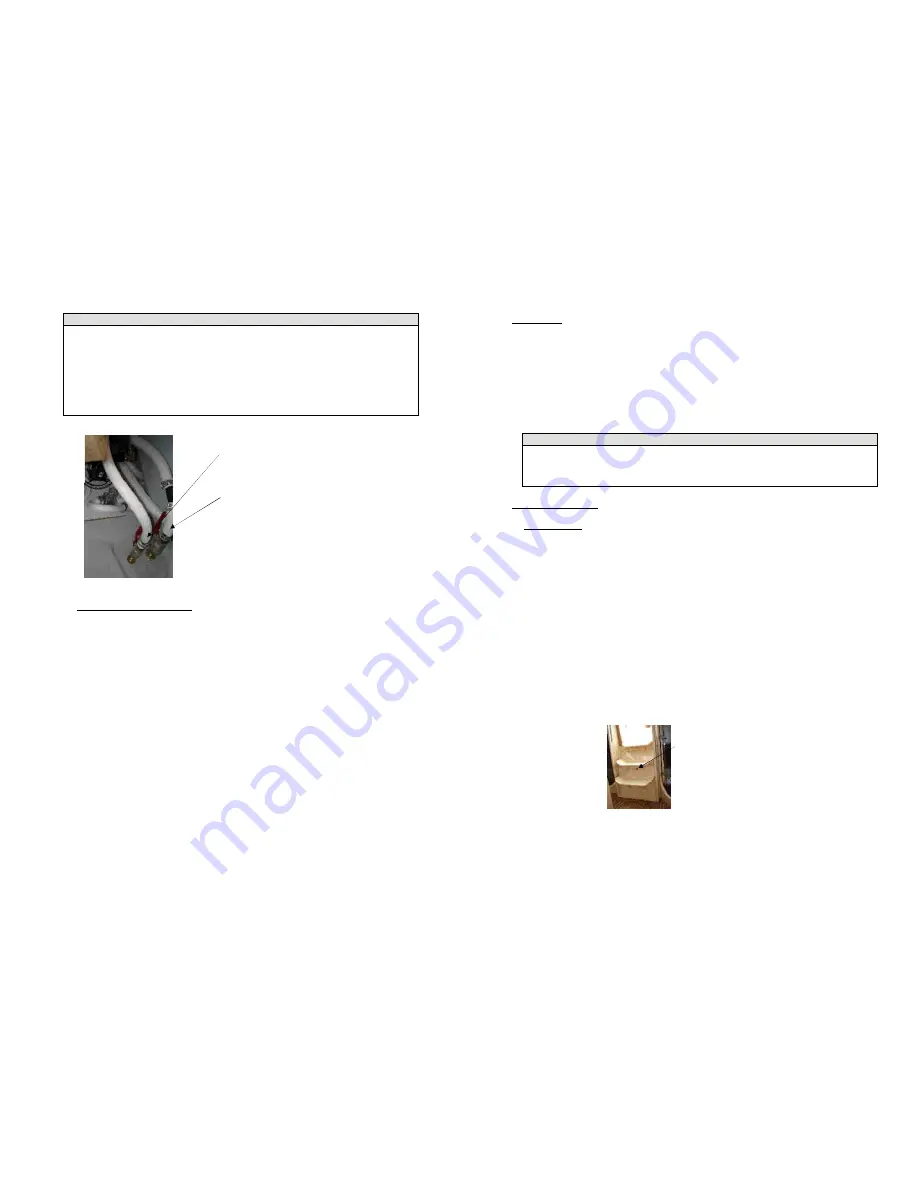
ANGLAIS 01-11-05
Page 19/88
FEELING 39
FEELING – GROUPE ALLIAURA MARINE – BP 231 – 85106 Les Sables d’Olonne Cedex -France
Tel 33 (0)2 51 21 05 38 Fax 33 (0)2 51 96 91 95 – http//:www.alliaura.com
ATTENTION!
- Never interfere with the tightening of the seacocks to the hull. In the event of a leak, consult
a
professional.
- In bad weather or when leaving your boat, close all the sanitation system seacocks.
- Keep sea-cocks closed when not being used.
- During wintering, clean and rinse the seacocks and skin fittings. Inspect the brass
accessories; slight surface corrosion is normal.
- In the event of more serious corrosion, consult your agent.
Wash-basin valves
Toilet valves
6.4. Operation of the sea toilets
- Open the sea water inlet seacock.
- Open the bowl emptying seacock.
- Set the lever to the “FLUSH” position.
- Operate the pump.
- To empty the bowl and avoid any water slopping when heeling, set the lever to the
"DRY BOWL" position.
-
Operate the pump until the bowl is dry.
- Repeat these flushing / emptying operations as many times as is necessary to ensure
complete emptying of the pipes.
-
When toilets are not being used, set the lever to the "DRY BOWL" position, or
the "CLEF" position for certain models.
-
Close seacocks after use, as the toilet is below the waterline
Change the toilet seals regularly
ANGLAIS 01-11-05
Page 20/88
FEELING 39
FEELING – GROUPE ALLIAURA MARINE – BP 231 – 85106 Les Sables d’Olonne Cedex -France
Tel 33 (0)2 51 21 05 38 Fax 33 (0)2 51 96 91 95 – http//:www.alliaura.com
7. FLOODING
Boat flooding risks:
- Before putting to sea, always check that portholes, deck hatches and any other openings
that could allow flooding are shut.
- When under sail, close all seacocks, except the engine water intake.
- Periodically check:
- Skin fittings, seacocks and pipes are watertight
- Proper emptying of the cockpit drains
-
Watertightness of the stern gland.
WARNING!
Cockpit locker lids must be fastened shut before putting to sea. This is particularly important
for the lockers representing a major flooding risk
8. FIRE PROTECTION
8.1. Installation
- Fire extinguishers are subject to national regulations, and for this reason they are not
supplied with your boat.
- We recommend you to equip your boat with fire extinguishers meeting the ISO 9094-1
standard, with the following specifications:
a)
Minimum capacity per extinguisher: 5A/34B,
b)
Minimum combined extinguisher capacity: 10A/68B,
c)
1 extinguisher within:
- 1 m (for boats < 10 m) or 2 m (for boats > 10 m) of the cockpit
- 2 m of the extinguisher opening for dowsing the engine,
d)
1 extinguisher within 2 m of the cooker,
e)
1 not more than 5 m from the berths,
f)
CO2 extinguishers may be placed in accommodation areas only where flammable
liquids are present (e.g. galley) or where there is powered electrical equipment. There
must not be more than one CO2 extinguisher per area at risk, and its maximum
capacity must not exceed 2 kg.
Only compatible replacement parts must be used in fire protection systems. They must
bear the same markings and be technically equivalent.
Engine compartment fire-extinguisher hose hole
Location between main companionway steps











































